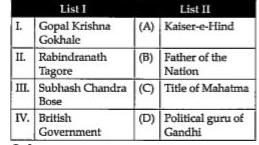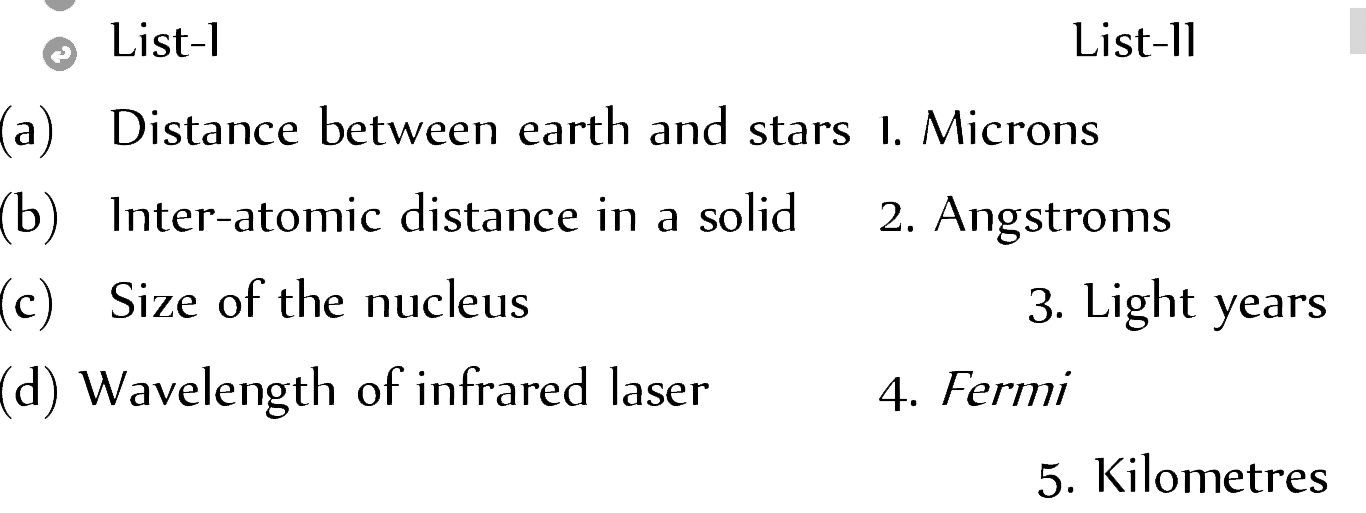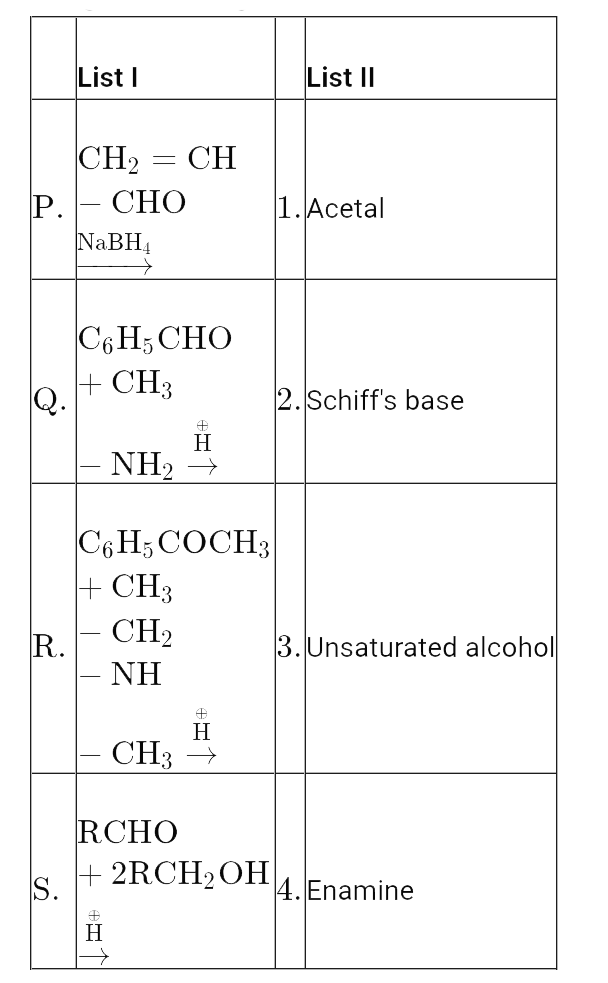Match List-I with List-II and select the correct answer using the codes given below the lists:

A-3,B-1,C-4,D-2
A-4,B-1,C-2,D-3
A-3,B-4,C-1,D-2
A-4,B-3,C-2,D-1
The correct Answer is:B
Step by step video, text & image solution for Match List-I with List-II and select the correct answer using the codes given below the lists: by Chemistry experts to help you in doubts & scoring excellent marks in Class 12 exams.
Updated on:21/07/2023Topper's Solved these Questions
- p-BLOCK ELEMENTSBOOK - VK JAISWAL ENGLISHCHAPTER - p-BLOCK ELEMENTSEXERCISE - LEVEL 3 (PASSAGE TYPE)
17 Videos
- p-BLOCK ELEMENTSBOOK - VK JAISWAL ENGLISHCHAPTER - p-BLOCK ELEMENTSEXERCISE - ONE OR MORE ANSWERS IS/ARE CORRECT
95 Videos
- p-BLOCK ELEMENTSBOOK - VK JAISWAL ENGLISHCHAPTER - p-BLOCK ELEMENTSEXERCISE - SUBJECTIVE PROBLEMS
35 Videos
- METALLURGYBOOK - VK JAISWAL ENGLISHCHAPTER - METALLURGYEXERCISE - ASSERTION-REASON TYPE QUESTIONS
29 Videos
- PERIODIC PROPERTIESBOOK - VK JAISWAL ENGLISHCHAPTER - PERIODIC PROPERTIESEXERCISE - MATCH THE COLUMN
11 Videos
Similar Questions
Match List-II with List-II and select the correct answer using the codes given below:

View SolutionAn aqueous solution of X is added slowly to an aqueous solution of Y as shown in List-I. The variation in conductivity of these reactions is given in List-II. Match List-I with List-II and select the correct answer using the code given below the lists:
List−IList−II(P)(C2H5)3N+CH3COOH(1)Conductivity decreases adn then increases X Y(Q)KI(0.1M)+AgNO3(0.01M)(2)Conductivity decreases and then does not change much X Y(R)CH3COOH+KOH(3)Conductivity increases and then does not change much X Y(S)NaOH+Hi(4)Conductivity does not change much and then increases X Y
Codes:
View Solution
Knowledge Check
Match List I with List II and select the correct answer by using the codes given below the lists:
 AI-D, II - A, III -B, IV-CBI-A, II – D, III -C, IV-BCI-A, II – D, III – B, IV-CDI-D, II -C, III – B, IV-A
AI-D, II - A, III -B, IV-CBI-A, II – D, III -C, IV-BCI-A, II – D, III – B, IV-CDI-D, II -C, III – B, IV-A
Match List-I with List-II and select the correct answer by using the codes given below the lists

View SolutionMatch List I with List II and select the correct answer using the code given below the lists :
List-1List−IIIBauxite(a)LeadIICarnallite (b)CopperIIIMalachite(c)MagnesiumIVGalena(d)Hall Process
Code :
View SolutionMatch List I with List II and select the correct answer using the codes given below the list :
List IList II(i)Heavy water(A)Bicarbonates of Mg and Ca in water (ii)Temporary hard(B)lather with soap water(iii)Soft water(C)D2O(iv)Permanent hard(D)Sulphates and water chloride of Mg and Ca
Code :
View SolutionMatch List I with List II and select the correct answer using the code given below the lists :
List-1List−II(a)Argentite(1)Halide ore of magnesium(b)Cuprite (2)Carbonate ore of iron(c)Siderite(3)Oxide ore of copper(d)Carnallite(4)Sulphide ore of silver
Code :
View SolutionMatch List I with List II and select the correct answer using the code
given below the lists :
List-1List−II(a)Argentite(1)Halide ore of magnesium(b)Cuprite (2)Carbonate ore of iron(c)Siderite(3)Oxide ore of copper(d)Carmelite(4)Sulphide ore of silver
Code :
View SolutionMatch List I with List II and select the correct answer using the codes given below the list :
List IList II1.Heavy water(a)Bicarbonates of Mg and Ca in water2.Temporary hard water(b)No foreign ions in water3.Soft water(c)D2O4.Permanent hard water(d)Sulphates and chlorides of Mg and Ca in water.
View SolutionMatch List I with List II and select the correct anwer using the codes given below

View Solution
